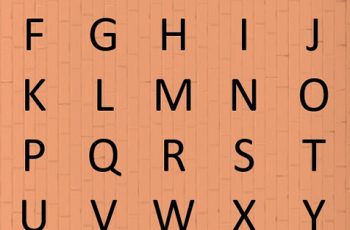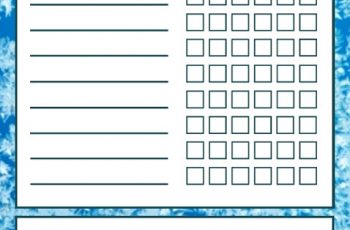Advertisement
As a person with diabetes, checking the sugar level in the blood must be done regularly. Conducting blood sugar tests means measuring the glucose amount in the blood. When people eat, especially carbohydrate food, it will produce glucose in our blood. The glucose functions as the source of our energy. In using glucose, our body needs a hormone that is called insulin. In normal people, the amount of insulin released by our organ, pancreas, will be suitable with the amount of glucose in the blood. However, in people with diabetes, the pancreas is unable to produce the sufficient amount of insulin for our body. Therefore, diabetes patients should check their sugar level regularly in order to stay in your healthy range by identifying patterns and customizing treatment goals.
In order to help diabetes patients manage the record of blood sugar tests they had, using blood sugar charts will really help. Usually, the blood sugar charts will contain three categories such as normal, early diabetes and established diabetes. There are also several types of tests such as post-prandial, Glucose Tolerance, fasting sugar and random blood. For the ranges on the blood sugar test charts, there are the maximum value, the minimum value and the value of two hours after having glucose intake.
There are some differences in the several types of blood tests. In fasting blood sugar tests, you need to fast for at least eight hours straight before taking your blood test. This kind of test intends to check for pre-diabetes and diabetes. It is often done as the first test. For a two hour postprandial blood sugar test, you need to take the test at exactly two hours after starting eating a meal. A diabetic person usually takes this test to check whether the right insulin amount with meals is consumed or not. While doing the random blood sugar test, you do not have to pay attention to when you eat your last meal because some random tests are taken throughout the day. In healthy people, blood sugar levels will remain quite constant. Therefore, a random blood sugar level test is usually done to check whether you have diabetes or not. Then, a glucose tolerance test is used for diagnosing pre-diabetes and diabetes. After you consume a drink or food with high amounts of sugar or glucose, you can take this test. Commonly, this glucose tolerance test is done to test diabetes which occurs during pregnancy.
Advertisement
When checking the sugar level in your blood, it is better for you to get familiar with A1C charts. This printable A1C chart will help you to understand A1C results in percentage. These charts are easy to use and printable. Check out the samples below.
Contents
At What A1C Level a Person is Considered Having a Normal Sugar Level?
A normal person will have A1C level below 5.7%. Having A1C level between 5.7% and 6.4% means that you are in the stage of prediabetes.
How to Lower Your A1C?
If you are concerned about having too high A1C, you can do some exercises. Doing the exercises will be able to help you lower your A1C since your muscles will take some amount of sugar from your blood. Therefore, you can lower your sugar level more quickly after consuming foods. Making these exercises as your daily habits will be good to be done because they will help you in lowering your A1C numbers. Still, do not forget to take your prescribed medicines. Having a controlled diet and enough exercises can really help you to lower your A1C.
Does Stress Affect the Level of A1C?
The answer is yes, according to ADA, stress can affect our A1C level. Several things can increase insulin resistance and blood glucose levels such as chronic stress and major life events. Remember when you are under chronic stress, your A1C level is potentially rising too.
What Should be Consumed to Lower A1C Levels?
If you want to lower your A1C levels through foods, you are advised to consume non-starchy vegetables, leafy greens, fatty fish, nuts and eggs, seeds, natural fats, apple cider vinegar, turmeric and cinnamon. It is better for you to consume apple cider vinegar especially at night since it will be more beneficial for your body compared to drinking it at other times of the day.
Some Printable A1c Chart that Are Easy to Download
Below are some samples of A1c charts that are easy to download and also printable. Use them to manage your blood sugar level.
A1c To Blood Glucose Conversion Table
This conversion table will help you to see the correlation between your A1C test results and your average daily blood sugar. You can check your blood glucose level after knowing the result of your A1c test by using this conversion table. For example, if your A1c score is 4, it means that your blood glucose in mg/dL is 68.

Blood Sugar Tracker
Using blood sugar tracker is an effective way to retain your data and identify trends easily. You can use this to track your blood sugar levels, meals, medications, A1C and others.
![]()
A1C Conversion Table
Rather than counting manually, you can use the A1C conversion table to check the correlation between your average daily blood sugar and your A1C test result. The A1C conversion table will be able to help you convert the A1C test results, which is in percentage, into blood sugar in mmol/L and mg/dL that is usually counted by using DCCT formula.

Monthly Blood A1C
In order to record your blood sugar levels before and after mealtimes, you can use a monthly blood A1C log. You can also take some notes you might need related to your blood glucose control.

Weekly Logbook A1C
If you want to know how your medication, meal, exercise and your other lifestyle factors affect the level of your blood glucose in a week, you can try using this weekly logbook A1C to keep your sugar level in check.

Advertisement

